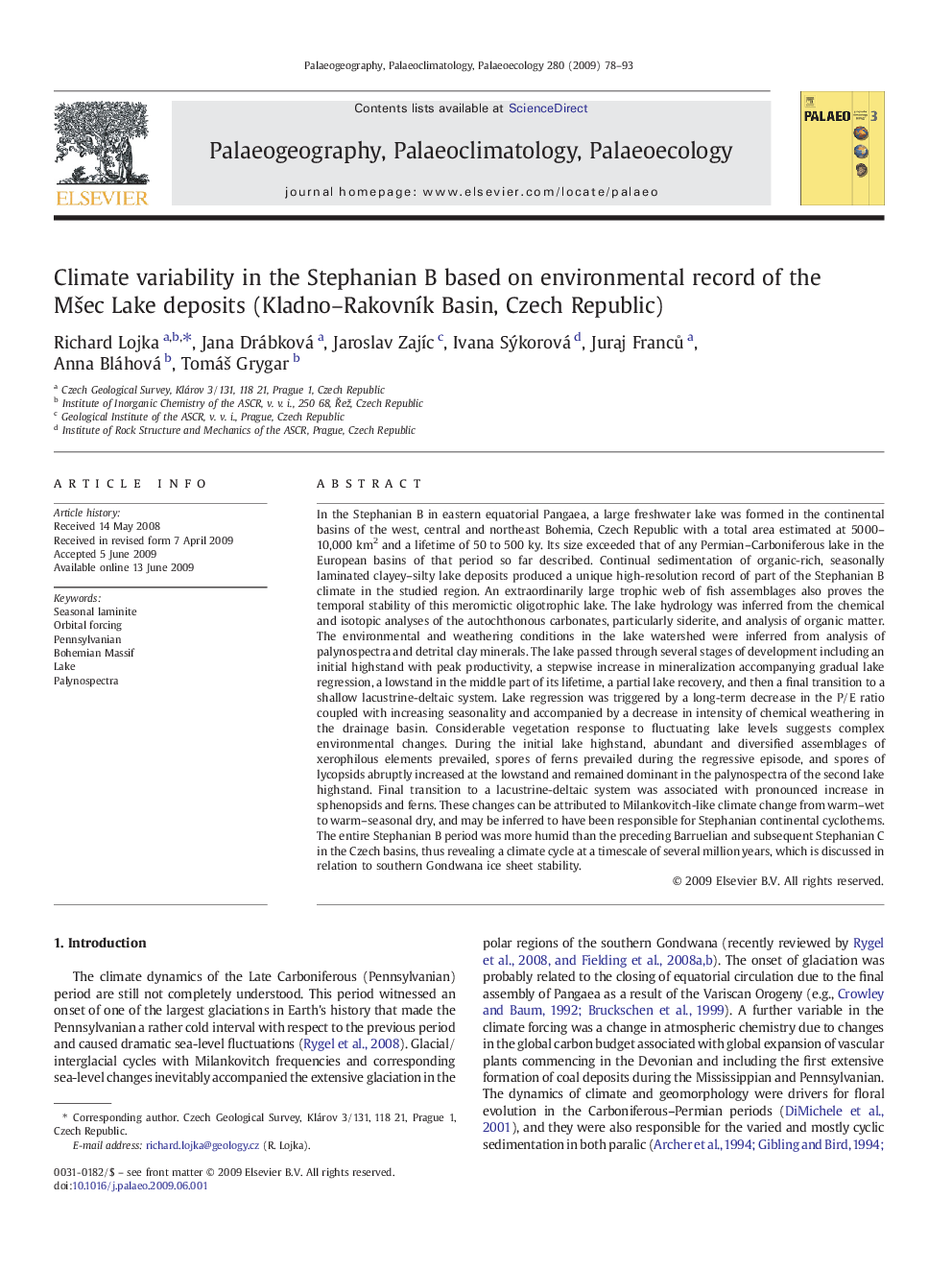| کد مقاله | کد نشریه | سال انتشار | مقاله انگلیسی | نسخه تمام متن |
|---|---|---|---|---|
| 4468036 | 1622297 | 2009 | 16 صفحه PDF | دانلود رایگان |

In the Stephanian B in eastern equatorial Pangaea, a large freshwater lake was formed in the continental basins of the west, central and northeast Bohemia, Czech Republic with a total area estimated at 5000–10,000 km2 and a lifetime of 50 to 500 ky. Its size exceeded that of any Permian–Carboniferous lake in the European basins of that period so far described. Continual sedimentation of organic-rich, seasonally laminated clayey–silty lake deposits produced a unique high-resolution record of part of the Stephanian B climate in the studied region. An extraordinarily large trophic web of fish assemblages also proves the temporal stability of this meromictic oligotrophic lake. The lake hydrology was inferred from the chemical and isotopic analyses of the autochthonous carbonates, particularly siderite, and analysis of organic matter. The environmental and weathering conditions in the lake watershed were inferred from analysis of palynospectra and detrital clay minerals. The lake passed through several stages of development including an initial highstand with peak productivity, a stepwise increase in mineralization accompanying gradual lake regression, a lowstand in the middle part of its lifetime, a partial lake recovery, and then a final transition to a shallow lacustrine-deltaic system. Lake regression was triggered by a long-term decrease in the P/E ratio coupled with increasing seasonality and accompanied by a decrease in intensity of chemical weathering in the drainage basin. Considerable vegetation response to fluctuating lake levels suggests complex environmental changes. During the initial lake highstand, abundant and diversified assemblages of xerophilous elements prevailed, spores of ferns prevailed during the regressive episode, and spores of lycopsids abruptly increased at the lowstand and remained dominant in the palynospectra of the second lake highstand. Final transition to a lacustrine-deltaic system was associated with pronounced increase in sphenopsids and ferns. These changes can be attributed to Milankovitch-like climate change from warm–wet to warm–seasonal dry, and may be inferred to have been responsible for Stephanian continental cyclothems. The entire Stephanian B period was more humid than the preceding Barruelian and subsequent Stephanian C in the Czech basins, thus revealing a climate cycle at a timescale of several million years, which is discussed in relation to southern Gondwana ice sheet stability.
Journal: Palaeogeography, Palaeoclimatology, Palaeoecology - Volume 280, Issues 1–2, 1 September 2009, Pages 78–93